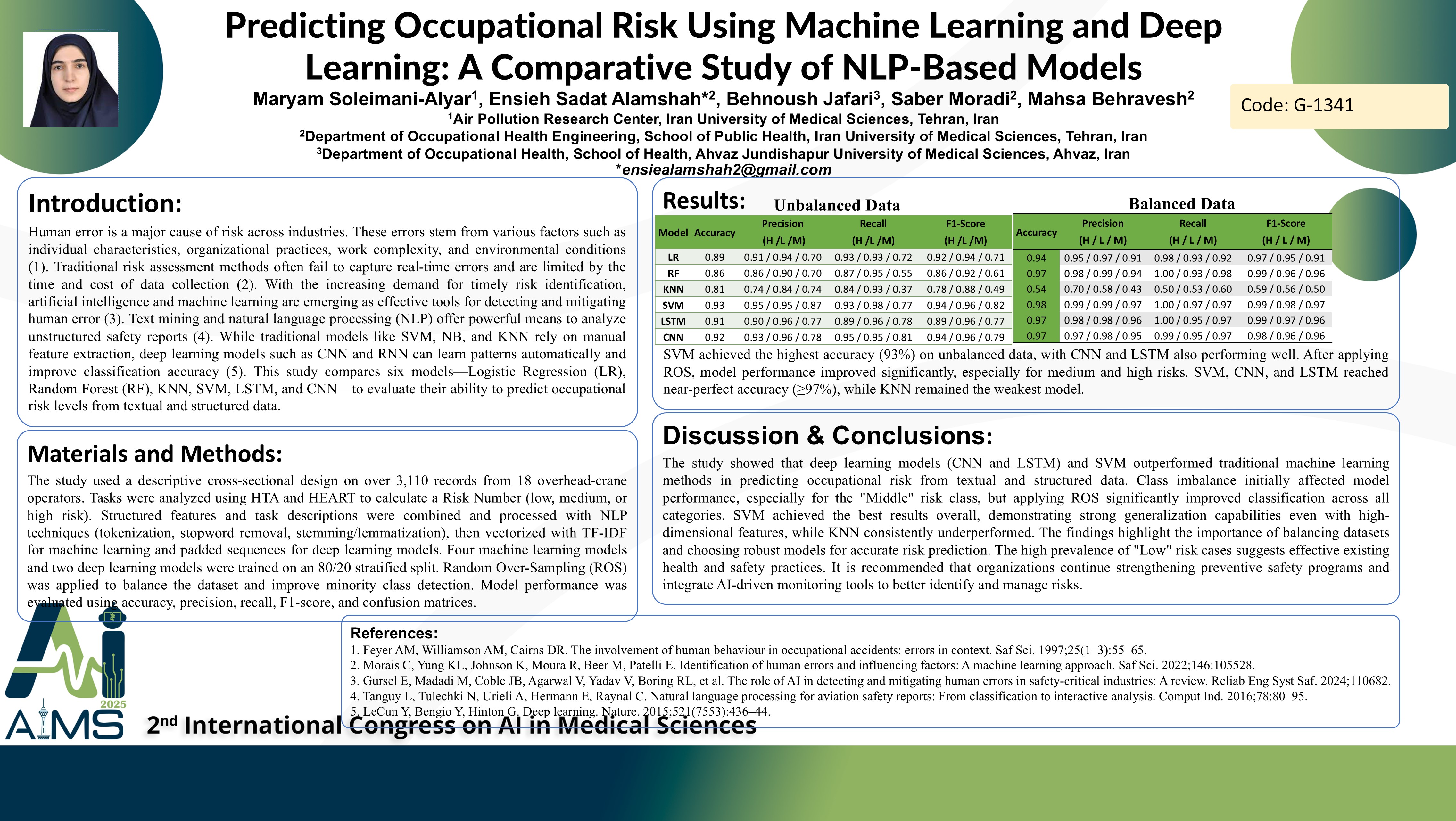Predicting Occupational Risk Using Machine Learning and Deep Learning: A Comparative Study of NLP-Based Models
Code: G-1341
Authors: Maryam Soleimani-Alyar ℗, Ensieh Sadat Alamshah *, Behnoush Jafari, Saber Moradi, Mahsa Behravesh
Schedule: Not Scheduled!
Tag: Intelligent Virtual Assistant
Download: Download Poster
Abstract:
Abstract
Background and aims: Identifying and evaluating human errors in the shortest time with high accuracy can significantly reduce occupational accidents and related damages. Given the advancements in Natural Language Processing (NLP) and Machine Learning (ML), this study aims to compare the accuracy and efficiency of various ML and Deep Learning algorithms in risk prediction. Method: This descriptive cross-sectional study was conducted on the job tasks of overhead crane operators in a process industry. The tasks of 18 cabin and remote-controlled overhead crane operators were analyzed using the HTA method, and the probability of human error for each task was quantitatively calculated using the HEART method. In this study, text data processing included stop-word removal, tokenization, stemming, and vectorization using the TF-IDF method. After preprocessing the data and splitting it into training and testing sets, ML models, including KNN, Random Forest, and SVM, as well as deep learning models such as LSTM and CNN, were trained for risk level prediction. Results: There was an imbalance in risk action distribution, where low-risk assessments were significantly more frequent than the "medium" and "high" categories. Among the models evaluated, SVM achieved the highest overall accuracy (93%) and demonstrated superior performance in precision, recall, and F1-score, making it the most balanced and efficient model. The CNN model also performed strongly with 92% accuracy, particularly excelling in textual data classification. Conclusion: This study demonstrates that the application of machine learning (ML) and deep learning models, particularly support vector machines (SVM) and convolutional neural networks (CNN), can effectively assist in identifying and predicting risks arising from human errors in process industries. The high accuracy of these algorithms makes them suitable options for risk management in work environments. Organizations are encouraged to implement these models in their risk prediction systems. Additionally, further research to explore influential factors in human errors and assess the efficiency of other algorithms in different industrial domains can enhance predictive accuracy and reduce workplace incidents.
Keywords
NLP, Risk Analysis, Deep Learning, Human_Error
